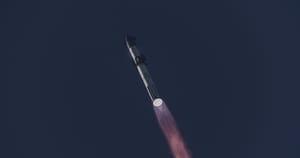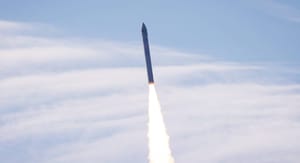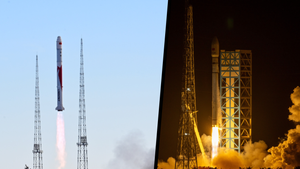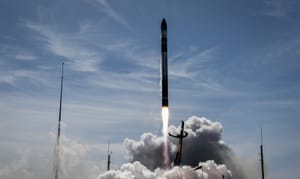
Recently, SpaceX quietly updated the webpage for Starship-Super Heavy's second integrated flight test clarifying the following information;
- All 33 Raptor engines on the Super Heavy Booster started up successfully and, for the first time, completed a full-duration burn during ascent.
- Starship executed a successful hot-stage separation, powering down all but three of Super Heavy’s Raptor engines and successfully igniting the six second stage Raptor engines before separating the vehicles. This was the first time this technique has been done successfully with a vehicle of this size.
- Following separation, the Super Heavy booster successfully completed its flip maneuver and initiated the boostback burn before it experienced a rapid unscheduled disassembly. The vehicle breakup occurred more than three and a half minutes into the flight at an altitude of ~90 km over the Gulf of Mexico.
- Starship's six second stage Raptor engines all started successfully and powered the vehicle to an altitude of ~150 km and a velocity of ~24,000 km/h, becoming the first Starship to reach outer space and nearly completing its full-duration burn.
- The flight test’s conclusion came when telemetry was lost near the end of second stage burn prior to engine cutoff after more than eight minutes of flight. The team verified a safe command destruct was appropriately triggered based on available vehicle performance data.
- The water-cooled flame deflector and other pad upgrades performed as expected, requiring minimal post-launch work to be ready for upcoming vehicle tests and the next integrated flight test.
SpaceX also said the following along with the information;
"Starship returned to integrated flight testing with its second launch from Starbase in Texas. While it didn’t happen in a lab or on a test stand, it was absolutely a test. What we did with this second flight will provide invaluable data to continue rapidly developing Starship." – "On November 18, 2023, Starship successfully lifted off at 7:02 a.m. CT from Starbase in Texas and achieved a number of major milestones:" (see above)
"With a test like this, success comes from what we learn, and this flight test will help us improve Starship’s reliability as SpaceX seeks to make life multiplanetary. Data review is ongoing as we look for improvements to make for the next flight. The team at Starbase is already working final preparations on the vehicles slated for use in Starship’s third flight test, with Ship and Booster static fires coming up next." – "Thank you to our customers, Cameron County, spaceflight fans, and the wider community for the continued support and encouragement. And congratulations to the entire SpaceX team on an exciting second flight test of Starship!"
Head of SpaceX, Elon Musk, has said online that the third test flight of Starship-Super Heavy could be ready from a hardware standpoint within a month! SpaceX however still needs to complete the mishap investigation for the second test flight and make any changes necessary.

What is Starship-Super Heavy?
Starship is the second stage of the Starship-Super Heavy launch vehicle and is planned to be reused. The Starship second stage is fifty meters tall and nine meters wide. The second stage is powered by three sea-level Raptor engines and three vacuum Raptor Engines with plans to increase it to six in the future, these engines burn liquid methane and liquid oxygen with a maximum thrust of 1500 tons. Starship is believed to weigh one hundred tons empty and one thousand three hundred tons fully fuelled. For reusability, Starship will separate from the booster, Super Heavy, in flight and continue up toward orbit. After a few orbits Starship will perform a deorbit burn and re-enter the atmosphere, after re-entry, Starship will aim to land on the chopsticks' of the launch tower, also called Mechazilla.
Super Heavy is the first stage booster for the Starship-Super Heavy launch vehicle and is planned to be reused, it is also currently the most powerful rocket stage ever flown. The Super Heavy booster is seventy-one meters tall and nine meters wide. The booster is powered by thirty-three Raptor engines burning liquid methane and liquid oxygen with a maximum thrust of 7590 tons. Super Heavy is believed to weigh two hundred tons empty and three thousand six hundred tons fully fuelled. For reusability, Super Heavy will launch from the Orbital Launch Mount and will then perform a boost back burn and land on the 'chopsticks' of the launch tower, also called Mechazilla, using its grid fins at the top for greater aerodynamic control during unpowered flight. Super Heavy also has a hot-staging ring atop of it to improve the performance of the Starship-Super Heavy stack and simplify the staging process.
Starship-Super Heavy is SpaceX's in-development fully reusable super heavy-lift launch vehicle. SpaceX is currently aiming to have the launch vehicle deliver one hundred and fifty tons to low Earth orbit while reused or two hundred and fifty tons when expended.




